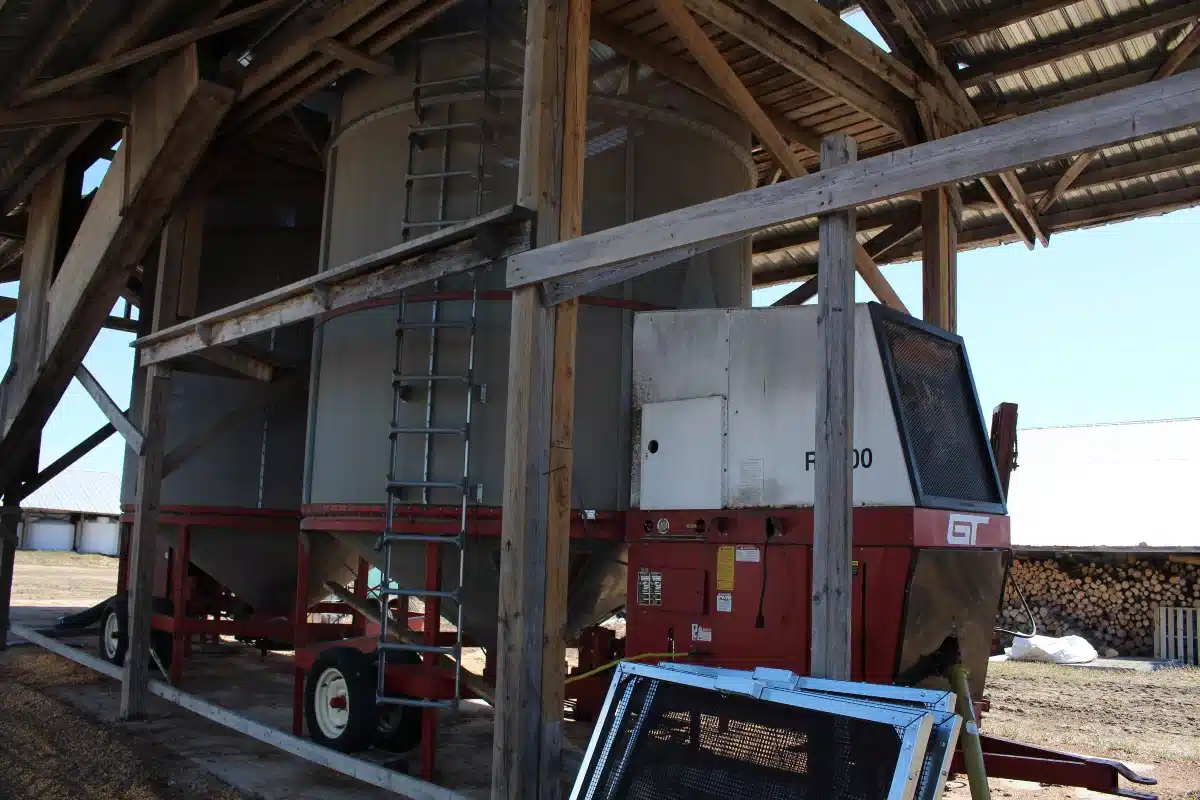Q: What should growers focus on to ensure a successful harvest this year?
A: This starts with crop staging for harvest. Swathing prior to combining and straight cutting are the two most common harvest methods for field crops in Western Canada. The decision to swath or straight cut will depend on farm planning, the risk of fall frosts, uniformity of crop maturity and variety attributes such as maturity, standability and shatter resistance.
Swathing can begin when physiological maturity has been reached. Starting with pulse crops such as field peas that mature from the bottom up, maturity is reached when the upper pods are turning yellow, the middle pods are yellow and the bottom pods are brown and detached.
Read Also

Cancer agency reclassifies another herbicide ‘probably carcinogenic’
The WHO’s cancer research agency has now put atrazine, a herbicide well known to corn growers, in the same potential-hazard category where the agency put glyphosate.
At this stage, the moisture content is less than 30 per cent and swathing can start. For straight cutting, 19 to 20 per cent moisture content is desirable. Moisture content less than 16 per cent will increase the risk of seed cracking.
For grain corn, full maturity occurs when the milk line has disappeared and a black layer forms at the tip of the kernels. Moisture content at this stage is 30 to 35 per cent. The ideal moisture content for harvest is 23 to 26 per cent.
For cereals, maturity is reached when the peduncle (stem just below the seed head) is completely yellow. Kernels are firm to hard dough and a thumbnail impression will remain on the kernel.
Moisture at this stage is approximately 30 per cent, and the crop can be desiccated or swathed. Combining can start when moisture is at 20 per cent if the grain is to be dried, 16 per cent if aeration is to be used and 14.5 per cent if no aeration is available.
For canola, physiological maturity is reached at 50 to 60 per cent seed colour change. Any slight speckling or mottling of the seed is considered a colour change and contributes to the colour change assessment.
Uneven growth stages, which can be due to several factors, can make the swathing decision difficult. There is never a perfect time to swath uneven crops. A swathing decision should be based on the maturity of the field where yield potential is the highest. Where there are logistical challenges for large acreages, swathing should not start any earlier than 30 to 40 per cent seed colour change.
If frost occurs, the crop should be swathed immediately because seed filling stops after swathing with no further accumulation of oil and protein. With frost, green colour gets fixed due to the destruction of enzymes that clear chlorophyll in higher moisture seed.
Pre-harvest aids for dry down can be used as a harvest management tool in a straight cutting situation. Depending on the product used, crops might have to be further advanced than the timing for swathing.
It is highly recommended to check with buyers to ensure they accept the use of pre-harvest herbicides and desiccants. Keep It Clean Canada recently released 2023 maximum residue limits (MRLs) for cereal and pulses. Important alerts are related to export markets with missing or misaligned MRLs and with market acceptance issues.
Moisture levels required for storage will vary by crop and by buyer depending on the contract. For example, canola is typically 10 per cent, wheat 14.5 per cent, feed barley 14.8 per cent, malt barley 13.5 per cent, field peas 16 per cent, soybean 14 per cent and corn 15.5 per cent.
After combining, aeration in the bin is recommended, especially if the moisture content isn’t at the level required for proper storage or if crops are harvested during warmer conditions. Stored grain with a moisture content above 25 per cent and a grain temperature above 30 C will only keep for a few days without drying.
Because of its higher oil content, canola is more sensitive to moisture and temperature in storage. Even if harvested canola goes into the bin dry, hot conditions can cause moisture content to increase through “grain sweating.”
If canola with high oil content is stored below eight per cent moisture and under 15 C, spoilage should not be an issue. Aeration and regular monitoring of bins is the best way to mitigate spoilage.
Keep these things in mind as the harvest season approaches to make sure you have the most successful season possible.
– Sola Ajiboye, PhD, MBA, PAg, is a manager of agronomic solutions for Nutrien Ag Solutions for southern Alberta in Calgary.




















